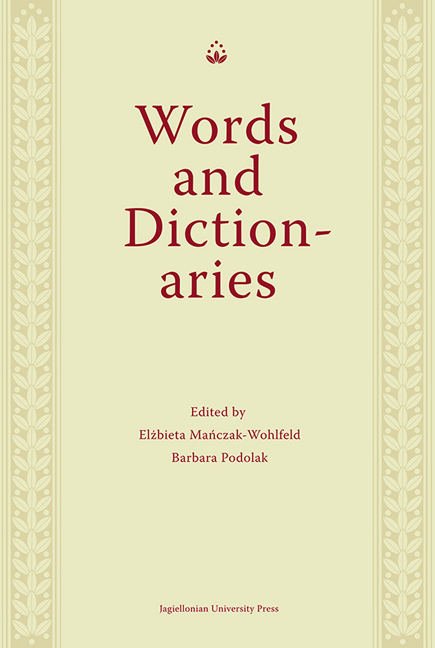 Words and Dictionaries
Words and Dictionaries Published online by Cambridge University Press: 18 January 2018
If asked about this article's character, even I, its author, would have to ponder what to say. Because what can it be? It is a contribution to the history of Altaic studies in Poland, and an essay in Manchu studies as well as an article which somehow touches upon issues of Turkology. But as for the latter ones, I have to admit that I barely skim through them here. Let someone more competent deal with them as they will do it better.
After this hopefully intriguing introduction, here is a handful of vital explanations. Among the relics of Manchu literature a special place is held by reading books or readers. Some of the texts contained in them have the form of dialogues, others are short stories, many of them are clearly didactic in nature. But we can also come across what we would call genre scenes. There exist several anthologies of these, differing not so much in contents but more in volume. The most extensive and the best known one bears the title Tanggȗ meyen, which means “One Hundred Chapters”.
According to T.A. Pang – expert in the field – the first readers were composed only in Manchu language. It may be assumed that their aim was to aid those Manchus who wanted to gain competence in reading the new script introduced less than a century earlier. Progressive assimilation of China's conquerors created the need for bilingual texts – Manchu-Chinese. Their additional advantage lay in the fact that also those Chinese who learnt Manchu could use them. Finally, as a natural course of events, readers containing versions in other languages of the empire popped up: Mongolian and Turkish (“Turki”) from Xinjiang. It is interesting, but most probably there were no Manchu-Tibetan readers. At least I have not come across such.
Among the known multilingual readers the bulk are Manchu-Chinese. Those addressed to the Mongols are few – among them one of the editions of the Tanggȗ meyen anthology – and those created with Xinjiang's Turks in mind are a rarity. According to my knowledge so far only two such anthologies have been known, both published by Erich Haenisch years ago.
To save this book to your Kindle, first ensure [email protected] is added to your Approved Personal Document E-mail List under your Personal Document Settings on the Manage Your Content and Devices page of your Amazon account. Then enter the ‘name’ part of your Kindle email address below. Find out more about saving to your Kindle.
Note you can select to save to either the @free.kindle.com or @kindle.com variations. ‘@free.kindle.com’ emails are free but can only be saved to your device when it is connected to wi-fi. ‘@kindle.com’ emails can be delivered even when you are not connected to wi-fi, but note that service fees apply.
Find out more about the Kindle Personal Document Service.
To save content items to your account, please confirm that you agree to abide by our usage policies. If this is the first time you use this feature, you will be asked to authorise Cambridge Core to connect with your account. Find out more about saving content to Dropbox.
To save content items to your account, please confirm that you agree to abide by our usage policies. If this is the first time you use this feature, you will be asked to authorise Cambridge Core to connect with your account. Find out more about saving content to Google Drive.